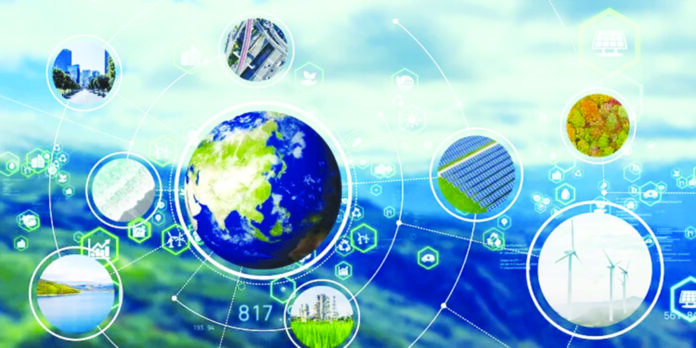The origin and development of climate change policy have been shaped by scientific discoveries, political negotiations, and societal shifts in understanding the impact of human activities on the global climate.
In fact, the foundation for understanding climate change began in the 19th century with scientists like John Tyndall and Svante Arrhenius, who identified the greenhouse effect and the role of carbon dioxide (CO2) in regulating the Earth’s temperature. Further, throughout the 20th century, advances in atmospheric science led to a better understanding of the climate system. The mid-20th century saw the development of computer models that could simulate climate, leading to more accurate predictions of global warming.
The first major international conference on climate change was held in 1979 (the First World Climate Conference), which led to the establishment of the World Climate Programme. In the 1980s, the issue of global warming gained more visibility, leading to further scientific investigations and the formation of the Intergovernmental Panel on Climate Change (IPCC) in 1988 by the World Meteorological Organization (WMO) and the United Nations Environment Programme (UNEP).
In the 1990s, the framework Convention and Kyoto Protocol paved the way for the United Nations Framework Convention on Climate Change (UNFCCC) which was established in 1992 during the Earth Summit in Rio de Janeiro, setting the stage for global efforts to combat climate change. The Kyoto Protocol was adopted in 1997, setting legally binding emission reduction targets for developed countries. It was a significant step forward in international climate policy, emphasizing the need for global cooperation to reduce greenhouse gas emissions. In the 21st Century Paris Agreement and Beyond the Copenhagen Accord (2009) and the Cancun Agreements (2010) laid the groundwork for further negotiations, leading to the landmark Paris Agreement in 2015.
The Paris Agreement for the first time brought almost all nations into a common cause to undertake ambitious efforts to combat climate change and adapt to its effects. The Paris Agreement set out a global framework to avoid dangerous climate change by limiting global warming to well below 2°C and pursuing efforts to limit it to 1.5°C. It also aimed to strengthen countries’ ability to deal with the impacts of climate change and support them in their efforts.
In line, the climate policy landscape in 2024 is shaped by a combination of ongoing commitments, new initiatives, and the pressing need for action in the face of escalating climate impacts:
- COP28 COMMITMENTS: The World Wildlife Fund highlights the importance of actualizing the pledges made during COP28, including the launch of a $11 billion Loss and Damage Fund, commitments to significantly increase renewable energy and energy efficiency, and efforts to incorporate greenhouse gas emissions from food systems into climate mitigation plans. The focus is on transitioning away from fossil fuels towards clean energy, with an emphasis on the need for countries to implement their Nationally Determined Contributions (NDCs) effectively to achieve significant emissions reductions in line with the Paris Agreement goals.
- GLOBAL CLIMATE ACTIONS AND CHALLENGES: The World Resources Institute outlines four key areas to watch in 2024: the positioning of climate action within political campaigns, the enactment of ambitious policies to limit warming, ensuring equitable benefits from the low-carbon economy, and increasing support for climate action in emerging economies. Food sustainability, energy grid modernization, and protection against extreme heat are also highlighted as critical issues needing attention and action.
- RENEWABLE ENERGY AND EMISSIONS TRENDS: Yale Climate Connections notes the mixed record of 2023, with it being the hottest year on record yet also a year of significant progress in reducing climate pollution in some regions. The USA and European Union saw reductions in emissions, attributed in part to policy measures like the Inflation Reduction Act and increased clean energy deployment. However, emissions increases in China and India offset these gains. The outlook for 2024 is cautiously optimistic, with the potential for global heat-trapping pollution to begin declining.
- EUROPEAN GREEN DEAL INITIATIVES: The European Commission continues to push forward with its Green Deal, introducing a range of proposals aimed at promoting repair of goods, securing critical raw materials, achieving net-zero industries, and reforming the EU electricity market to boost renewables and enhance industrial competitiveness. This comprehensive approach reflects the EU’s commitment to leading in the transition to a sustainable, climate-neutral economy. These updates underscore a global climate policy environment that is both ambitious and fraught with challenges. The emphasis is on translating commitments into tangible actions, addressing systemic issues within food and energy systems, and ensuring that climate policies are inclusive and equitable.
Effective climate change policies are multifaceted and require a comprehensive approach that encompasses both mitigation of greenhouse gas emissions and adaptation to climate impacts.
Developing and implementing climate resilience policies is essential to prepare for and adapt to the adverse effects of climate change. Incorporating these elements into climate change policies can help nations effectively tackle the challenges posed by climate change, making progress towards a more sustainable and resilient future.
Based on insights from various sources, the key requirements for climate change policy include:
- INTEGRATION OF SOCIAL SCIENCE INSIGHTS: Effective climate policies should incorporate findings from social science research to address consumer behaviours, political polarization, and misconceptions about public opinion. This can help create policies that are more likely to be accepted and adopted by the public, leading to meaningful change in behaviours and attitudes towards climate-friendly practices.
- REAL-WORLD EXAMPLES OF SUCCESS: Learning from successful climate policies implemented globally can provide valuable insights. The World Bank’s report on 25 effective climate policies from diverse countries highlights the importance of designing and implementing policies that take into account local contexts and compromises. These examples demonstrate tangible progress in various sectors and geographical locations, providing a blueprint for other nations.
- ADDRESSING ADAPTATION LIMITS: There are both hard (physical) and soft (institutional or economic) limits to adaptation, and climate policies need to balance between mitigation and adaptation efforts. Policies should aim to minimize conflicts between these limits and target adaptation expenditures towards manageable risks without hitting near-term limits. This requires a deliberate approach to adaptation, fundamentally shifting assumptions about risk and integrating climate considerations into socioeconomic systems.
- VALUING ECOSYSTEMS AND INCLUSIVE PARTICIPATION: It’s crucial for policies to fully value ecosystems and their services, ensuring broad and inclusive participation in the policymaking process. This includes engaging with Indigenous and local community institutions, establishing sustainable benefit-sharing mechanisms, and enhancing transparency.
- FOCUS ON NATURAL CLIMATE SOLUTIONS: Policies should prioritize natural climate solutions, such as conservation, restoration, and improved management of ecosystems. These solutions not only help in reducing greenhouse gases but also provide additional benefits like conserving biodiversity, creating sustainable livelihoods, and improving human health outcomes.
- BUILDING CLIMATE RESILIENCE: Developing and implementing climate resilience policies is essential to prepare for and adapt to the adverse effects of climate change. Incorporating these elements into climate change policies can help nations effectively tackle the challenges posed by climate change, making progress towards a more sustainable and resilient future.






















